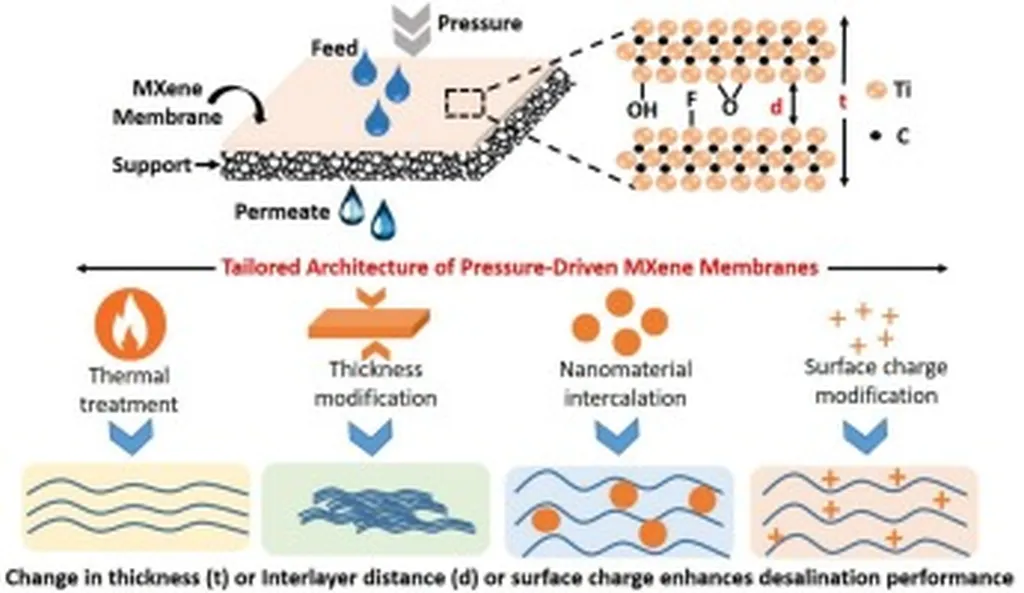In the relentless pursuit of efficient and sustainable desalination technologies, researchers have made a significant stride by enhancing thin-film composite (TFC) membranes with a novel material known as Ti3C2Tx MXene. This breakthrough, published in the journal InfoMat (translated from Chinese as Information of Materials), could have profound implications for the energy sector, particularly in regions where water scarcity is a pressing concern.
At the heart of this innovation is the work of M. Obaid and his team at the Environmental Science and Engineering Program, Division of Biological and Environmental Science and Engineering (BESE) at King Abdullah University of Science and Technology (KAUST) in Thuwal, Saudi Arabia. Their research focuses on addressing the critical challenges associated with the separation performance of TFC membranes, which are widely used in desalination processes.
The team discovered that the performance of TFC membranes is heavily influenced by the nanoscale thickness of the polyamide (PA) layers and their distinctive ridge-and-valley roughness. This complex morphology is a result of interfacial instability during the highly exothermic interfacial polymerization (IP) process, where heat generation drives non-uniform PA layer growth. To mitigate these instabilities, the researchers introduced thermally conductive MXene (Ti3C2Tx) nanosheets, which are spray-coated onto the supportive polymeric substrates before initiating the IP process.
“The MXene-coated substrate significantly improves the surface morphology of the PA layer, reducing its thickness to 18 nanometers and minimizing nanovoid formation due to the effective lateral heat dissipation by the Ti3C2Tx MXene interlayer,” explained Obaid. This innovation ensures uniform polymerization and defect-free PA layers, leading to a more than two-fold increase in water flux, surpassing that of commercial membranes, while significantly improving ion rejection.
The implications of this research are far-reaching for the energy sector, particularly in the realm of desalination. As water scarcity becomes an increasingly pressing issue, the demand for efficient and cost-effective desalination technologies continues to grow. The enhanced TFC membranes developed by Obaid and his team could play a pivotal role in meeting this demand, offering a more sustainable and energy-efficient solution for water reuse and desalination.
“This study highlights the significant impact of substrate thermal conductivity on desalination efficiency, enabling the development of smooth and efficient PA nanofilms for high-performance desalination through the tailored design of interlayered TFC membranes,” Obaid added. The research not only advances our understanding of membrane technology but also paves the way for future developments in the field, potentially revolutionizing the way we approach water treatment and reuse.
As the world grapples with the challenges of climate change and water scarcity, innovations like these offer a glimmer of hope. By pushing the boundaries of material science and engineering, researchers are not only addressing critical environmental issues but also shaping the future of the energy sector. The work of Obaid and his team serves as a testament to the power of scientific inquiry and the potential for transformative change in the face of global challenges.

